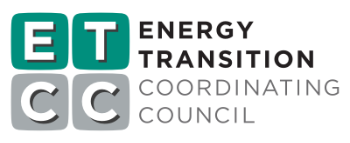Project Info
COMPLETE
Project Title
Commercial Building Duct Sealing Energy Savings and Cost Analysis
Project Number ET24SWE0048 Organization SWE (Statewide Electric ETP) End-use Whole Building Sector Commercial Project Year(s) 2024 - 2025Project Results
This report builds on the Commercial Building Duct Sealing Market Characterization study, which identified significant energy efficiency opportunities from duct sealing technologies in small commercial buildings (J. Breda et al., 2024). Through comprehensive market analysis and field research, the prior study highlighted critical factors impacting duct configurations and leakage characteristics. This subsequent study focuses on quantifying energy savings potential through detailed energy modeling and cost-effectiveness analysis to guide targeted incentive programs. The project team conducted EnergyPlus simulations across 16 California climate zones using standardized small commercial prototypes: small office, fast food restaurant, retail store, and restaurant dining. The simulations considered two distinct leakage modeling methods—leakage-to-inside and leakage-to-outside—to capture realistic operational and energy-impact scenarios reflective of typical small commercial buildings. Energy modeling results show meaningful energy savings, with heating, ventilation, and air conditioning system savings of up to 30 percent, depending on the leakage scenario, system type, and climate zone. In general, leakage-to-outside scenarios yielded greater savings, especially in climate zones with more extreme temperatures and in buildings with continuous fan systems, emphasizing the potential benefit of advanced sealing methods. Cost analysis further substantiates the practicality of duct sealing measures. Manual sealing approaches, primarily mastic and tape, typically cost between $0.5 and $1.5 per square foot of building, delivering moderate leakage reduction of about 40 to 50 percent. Aerosol-based sealing, though higher in initial investment at $1 per square foot, significantly reduces leakage by 70 to 90 percent and substantially decreases labor costs, particularly in buildings where ducts are difficult to access. Because California’s energy prices are more than double the US commercial average, duct sealing represents an unusually attractive efficiency investment in the state. Coupling utility‑funded leakage diagnostics with tiered, performance‑based rebates that buy aerosol projects down to a less than or equal to five‑year payback can unlock verifiable savings while supporting the state’s climate goals. This comprehensive evaluation of cost versus savings and payback periods highlights duct sealing as a strong candidate for incentive programs. The substantial energy savings, combined with relatively short payback periods, demonstrate duct sealing’s effectiveness in achieving rapid energy and cost reductions. Therefore, targeted diagnostic programs and performance-based incentives tailored for sealing projects present a highly attractive investment opportunity for California's small commercial sector, supporting statewide energy efficiency and decarbonization goals.
Project Report Document
Loading PDF Preview...
